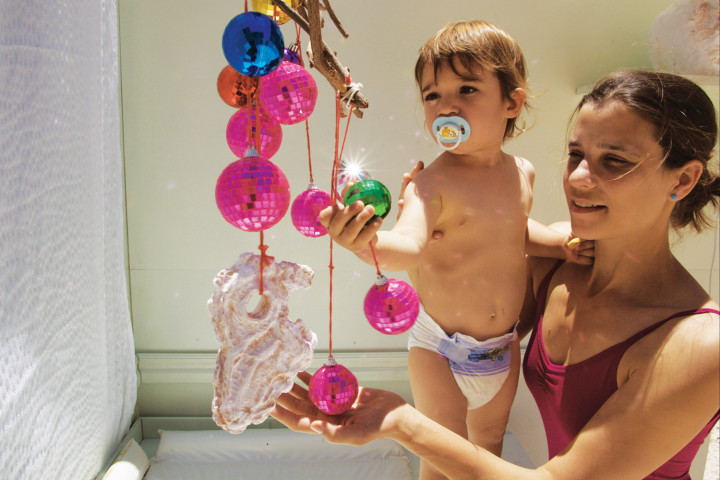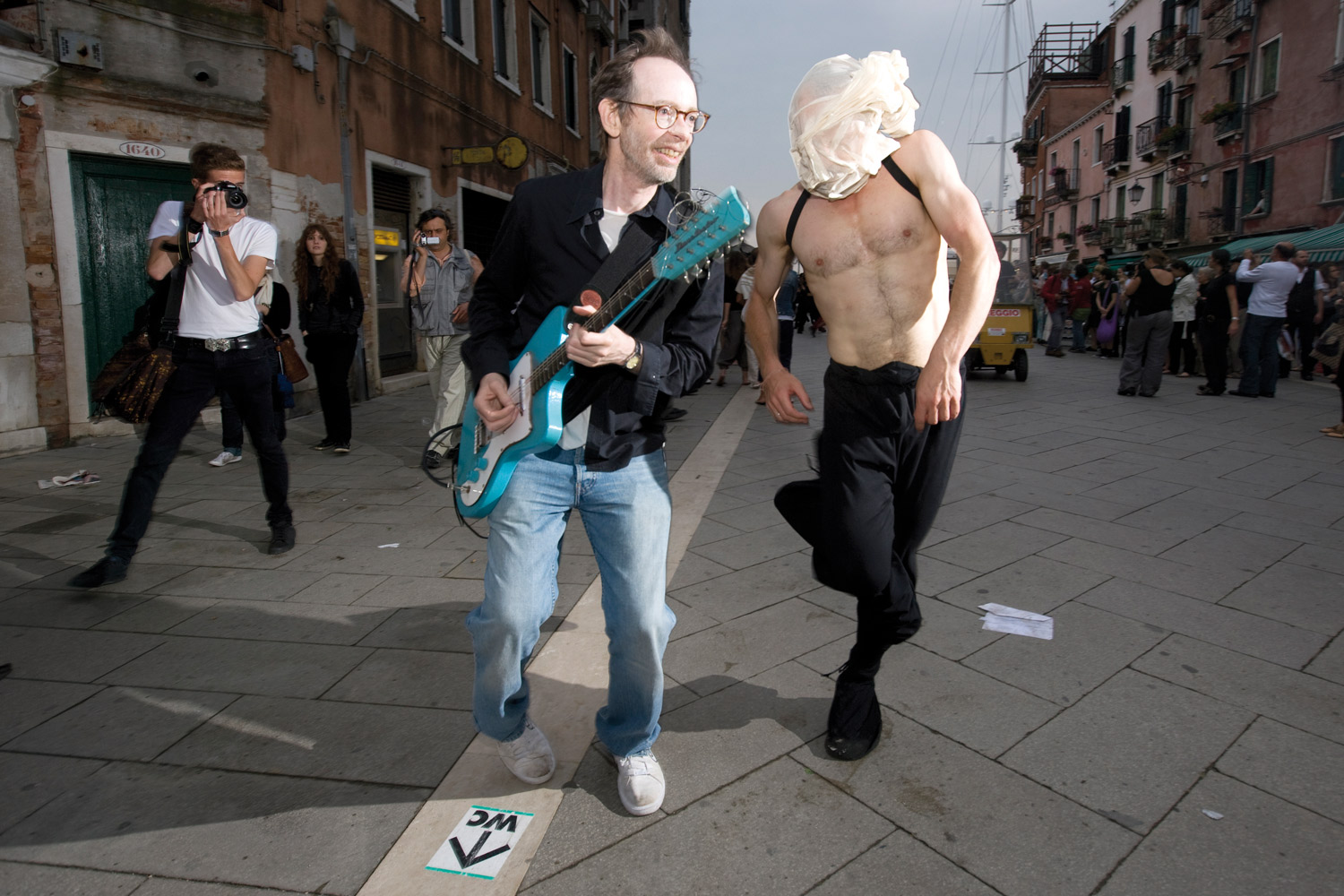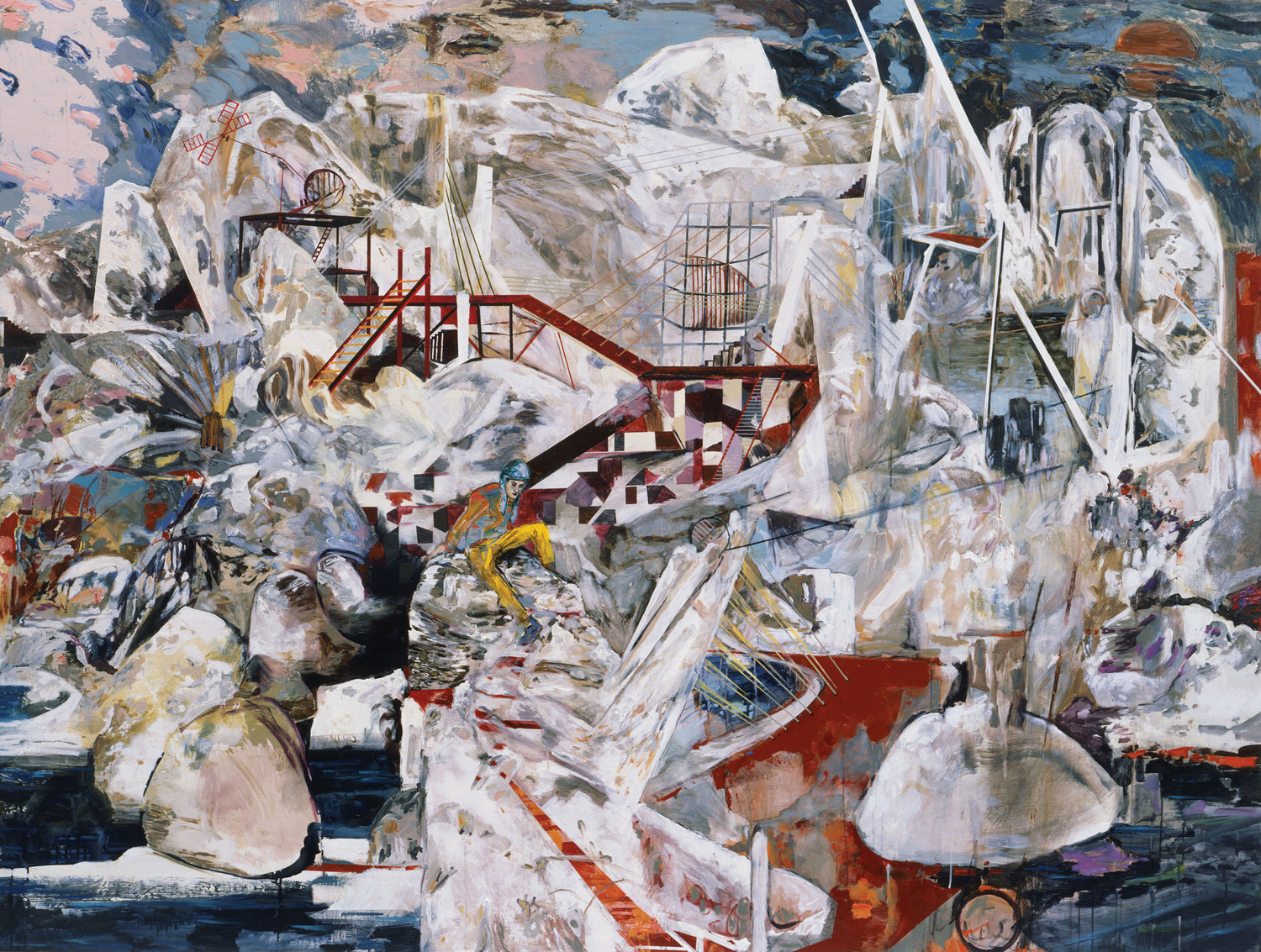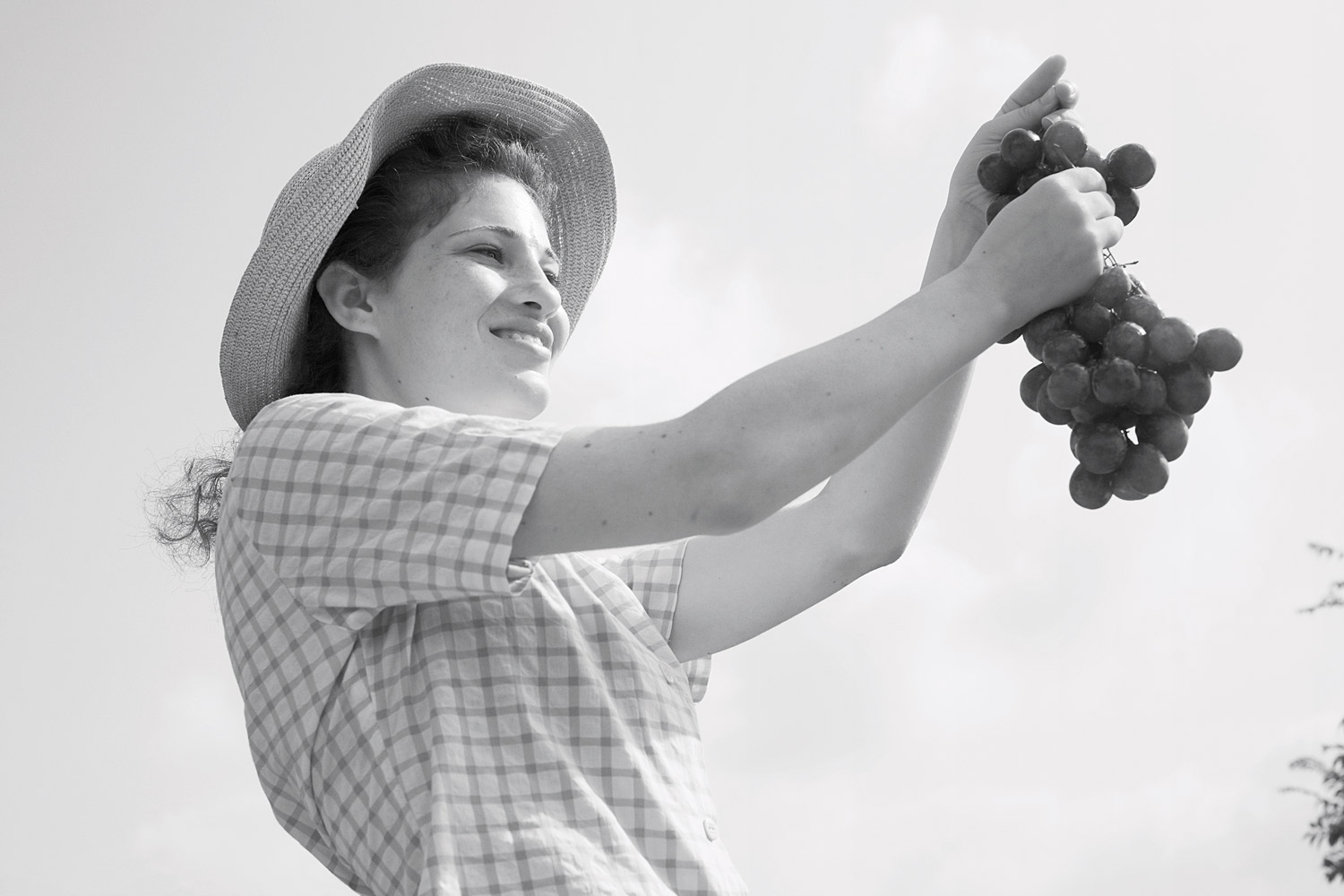
Yael Bergstein: Over the last few years your work has transitioned from installations featuring scenes of fixed occurrence to installations of performative spaces. In your latest installation, The Lesson (2009), there is a total transformation of the space, and I sense there is an attempt to perform…
Michal Helfman: I tend to think of a space as the starting point rather than a place that will host the end of the process. In this way, the space becomes the singular object of the work. Just as every person has a certain emotional structure and an inner organizing system of reality, the same goes for any exhibition space. In The Lesson I wanted to use the space as one and to perform a one-shot action. Thus one space, when rotated, transforms itself into another, and between those two extreme transformations everything occurs. I built an abstraction of a ballet studio and turned it on its axis. Through the formal rotation, all the elements in the studio — a mirror, a bar and a stage — underwent a contextual transformation. The ballet studio became a strip club: two places that are perceived as two binary cultural poles. When flipping the frame, the horizontal bar becomes a vertical pole that is an extroverted movement charged with sexuality.
The ceiling (now a sex mirror) creates a kaleidoscopic effect leading to a sense of spatial disorientation and detachment. It’s a space in which the viewer finds him/herself trapped between the crossing dimensions. In the installation Bat-Dor (2007) I used reflective surfaces: a number of scenes placed on one big stage, which the viewer approached suddenly from the backstage. The different scenes reflected each other. That arrangement was based on the inner structures of the psyche that is made up by a collection of individual events, which simultaneously reflect in and are reflected upon the other events.

YB: A garment, the Kimono ‘hanging’ on the floor in the installation The Lesson, appeared in the form of a coat circling around on an electric conveyor belt in Iris (1999). It seemed to indicate the absent body, the lack of a physical state, but also an ecstatic state of mind or nudity. Do you have an interest in pre-occurrences or in post-occurrences?
MH: In Merce Cunningham’s Walkaround Time the backstage is exposed to the audience. Once the dancers move off the stage’s center, one sees them wrapping in robes to keep their bodies warm and prevent extreme body temperature fluctuations — until they perform again — then they take off the robes again. In Iris I installed a party ghost, above which a coat floats on a rail on the ceiling. I found the coat at the Haoman 17 club in Jerusalem [now in Tel-Aviv and Haifa] where I worked as a set designer. The storage room had a huge pile of coats and garments that were forgotten after the club’s parties. I saw them as evidence or traces of a moment of totality and of the accelerated physical and mental transformation that occurred through the club’s sphere. The coats were cast aside as the individual and collective body heat rose, and the collective perception moved to areas of self-oblivion. The abandoned coats become irrelevant items in this new state. It makes you question the whereabouts of ‘the physical.’ The garment then is only the evidence of a body that was there and of its transformations, just as the sloughed off snakeskin is evidence of the snake.
YB: One of the only moments in your work where you showed a total occurrence/event within the reflective installation space was the video Tiesto (2000), where inhalation and quick dissemination of a synthetic drug was emblematic of an image you have interest in.

MH: I shot hardcore clubbers — barmen, doormen, dancers and set builders in the backroom of a club a few hours before a party. I gave them laughing gas — nitrous oxide. If this is usually inhaled in a small birthday balloon, I gave them a giant balloon. As a drug, laughing gas condenses an experience of several hours into 60 seconds. It fast-forwards the rush and states of exhaustion. I had these people sitting in front of the camera as pure documentation. The balloon deflates to show the face of the person who, by that time, is in a state of deformation. These people loose control of their body sometimes to the point of unconsciousness. The portrait dismantles and then, after a few seconds, they get hold of themselves again. These passages are like metronomes for me; they form the inner beat of my work.
YB: States of melting materials and dissolving shapes, which materialize as the climatic moment — are they both the image and the emblem of this movement of transformation?
MH: Yes. The Owl installation at the 50th Venice Biennale in 2003 embodied that. Also my paintings use black panda colors that are reminiscent of lava, cooling outside while melting inside. This is the mental state that I find linked to the physical experience. It can occur when you fall deeply in love or during sex when you forget yourself completely. The pleasure can involve pain, and these two connect to primal, animal-like states. What disco clubs, dance and theater sets have in common is the performance they entail. These are places where the physical experience happens in real time in front of the others. The club, the stage and also the desert landscape define an area of happening that demands a total sensual presence from those who attend. Art’s space is cooler, more reflective, and I test how it can be considered in relation to the invested totality of performance-related sites.

YB: Surrealist rhetoric in your works (one-shot flips of a space that becomes a space of mental and sensual transition, and the young, tender body in Katja [2007]) evokes masochism, such as in the video work Just Be Good to Me (2009).
MH: Just Be Good to Me’s soundtrack is a masochistic song but not without self-consciousness. It’s a pop song in which the woman says she knows the guy is unfaithful but she doesn’t care. The original song is by a group called S.O.S Band. For my video I found a vocal version and when you get this strong unaccompanied female voice the song becomes chillingly candid. The refrain “just be good to me” becomes this primal cry of any human being who depends on a relationship. The moment in which the mother and the son disappear into the desert night, with the cry still echoing, really illustrates this mutual demand.
The video portrays a nursing room as a life-size model in the midst of the desert. This is neither a continuous space nor a continuous narrative. It’s an illusionary moment that begins like an ordinary home video and then goes somewhere else. That happens because the illusion is experienced as a breakdown. The model dismantles and disappears. Every place they leave falls apart and gradually disappears one after the other like in a dream until the mother and the son are also out of sight. The house is there, but as a physical experience while the self is thrown into an abyss.





